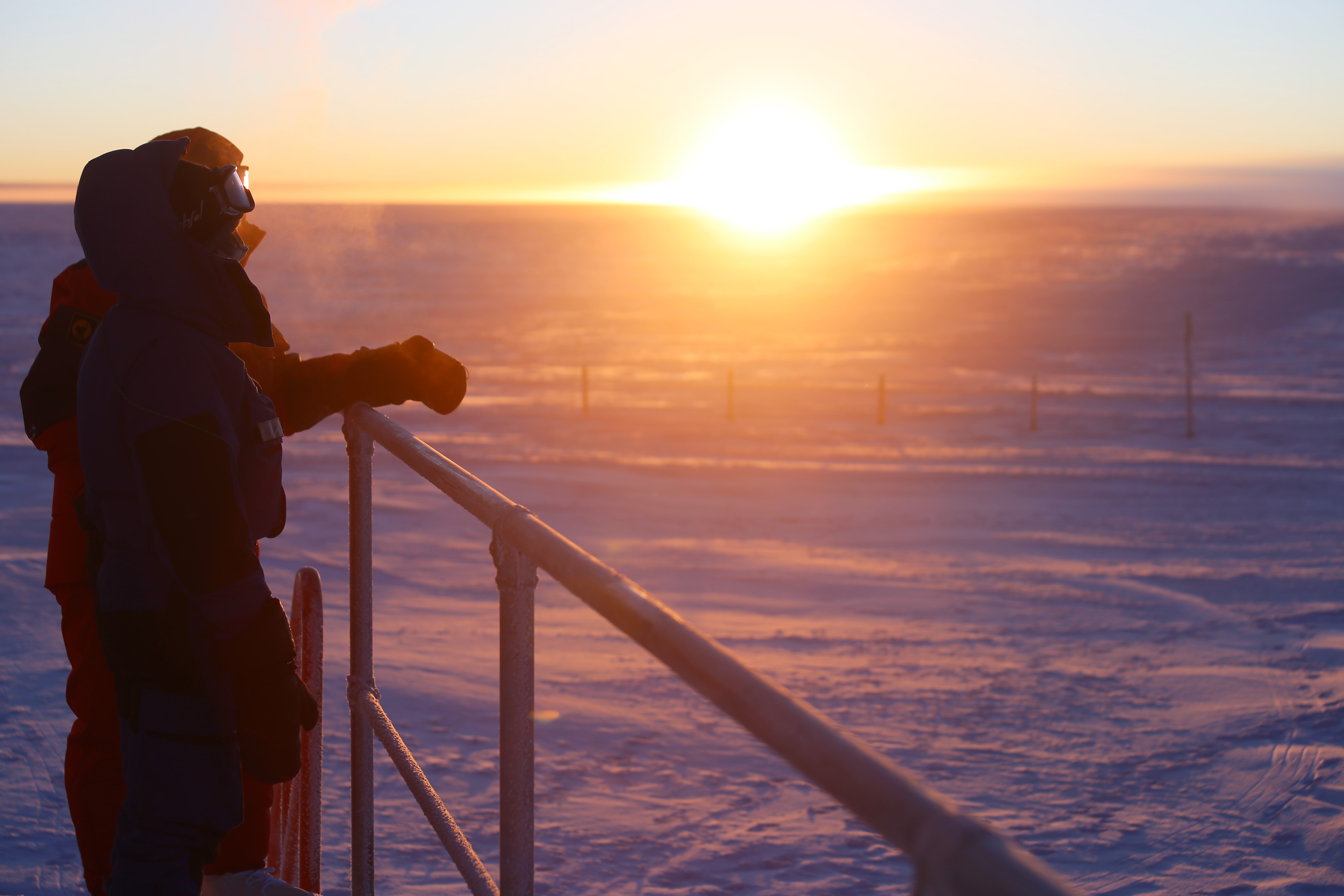Dr. Nadja Albertsen is the ESA-sponsored medical doctor spending 12 months at Concordia research station in Antarctica. She facilitates a number of experiments on the effects of isolation, light deprivation, and extreme temperatures on the human body and mind.
I feel a sharp pain in the tip of my nose before I pull the camera away from my face. For a split-second it almost seems like there’s a bit of skin on the screen. I give my frost-covered camera a puzzled look as I feel the cold penetrating my battery-heated gloves. I decide to put the camera away, chuckling at the image of my nose frozen to it.
While on a photo safari I take a pit stop in the astronomy shelter just over 300 m from the base to change my goggles and face mask in warmer conditions. I still have a clear view of the sunset from here, and I notice that the astronomer has hoarded pistachio nuts from the base. He’ll be hearing about it later.
Our astronomer has calculated that the sun will set for the last time this winter on 2 May and I have been on the road for the last two days to photograph almost-last-sunrises and near-last sunsets. It has been a little difficult to entice others to join, partly because of temperatures and partly because of work and sleep rhythms. As I write this it is 1 May, the thermometer says –84°C and unlike the day before, the equipment is managing better.
Today both my gear and myself are perfectly packed and dressed. In just over 45 minutes I can wander around the snow and the great silence, and enjoy the sunset all while warm.
Orange and red colours blend with the white and blue of the snow and sky. The day feels almost as magical as fresh-fried bacon. And even though the camera hardly has it as warm as I do, it does its work surprisingly well in this cold, and it is only when the battery dies that I return to the base, smiling once more.
By this time, balaclava number two is also iced over and it feels and sounds like I’m breathing through a diving mask – or like Darth Vader – with resistance and hoarse whining. I can see that my exhaled air can no longer penetrate the thick fabric, and instead finds a way down my neck before sending a steam cloud back up through my collar. The camera is has also frozen over by the time I reach the base, and only after an hour can I touch it again without gloves.
But the results are good!
***
It’s finally 2 May, and this time a small group of us heads to the astronomy shelter to take in the last sunset before the long winter. However, the sun rises suspiciously high in the sky before it starts to sink again.
It turns out the astronomer has (again) made a calculation error. He tries to explain (again) that the definition of a last sunset in astronomy is when the Sun’s geometric centre is below the horizon, and not completely out of sight. But we don’t buy it, because we remember the episode with the first full Moon in February, when his calculations sent the whole team to the roof of the base an hour early. But it’s quite difficult to get upset over an “extra” one or two days with the Sun.
We enjoy the sight of the flaming Sun together and of course poke fun at the astronomer for the rest of the day (and the next). We are even considering betting on when the Sun actually dives below the horizon for the last time (it was 4 May), and when it will then reappear. It will likely not be whichever day in August the astronomer says it will be.
We have long looked forward to the last sunset and it seems that almost everyone has gotten used to the thought and that some of the nervousness has settled. However, as the day coincides with one of the technician’s birthday, we decide to focus on our team member’s birthday instead of bidding the Sun farewell.
To read Nadja’s adventures at Concordia in Danish, see her personal blog.








Discussion: one comment
What a wonderful idea to take this pictures to explain the world how you feel and liv in this extreme part of the world. Wonderful. Thank you.